Antibody data
- Antibody Data
- Antigen structure
- References [1]
- Comments [0]
- Validations
- Immunocytochemistry [5]
- Other assay [2]
Submit
Validation data
Reference
Comment
Report error
- Product number
- PA5-20419 - Provider product page

- Provider
- Invitrogen Antibodies
- Product name
- LIS1 Polyclonal Antibody
- Antibody type
- Polyclonal
- Antigen
- Synthetic peptide
- Description
- A suggested positive control is Hela cell lysate. PA5-20419 can be used with blocking peptide PEP-0536.
- Reactivity
- Human, Mouse, Rat
- Host
- Rabbit
- Isotype
- IgG
- Vial size
- 100 μg
- Concentration
- 1 mg/mL
- Storage
- Maintain refrigerated at 2-8°C for up to 3 months. For long term storage store at -20°C
Submitted references MicroRNA-144 suppresses cholangiocarcinoma cell proliferation and invasion through targeting platelet activating factor acetylhydrolase isoform 1b.
Yang R, Chen Y, Tang C, Li H, Wang B, Yan Q, Hu J, Zou S
BMC cancer 2014 Dec 5;14:917
BMC cancer 2014 Dec 5;14:917
No comments: Submit comment
Supportive validation
- Submitted by
- Invitrogen Antibodies (provider)
- Main image
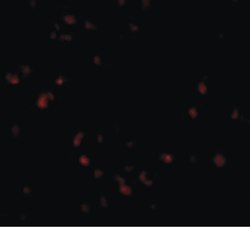
- Experimental details
- Immunofluorescent analysis of Jurkat cells using a LIS1 polyclonal antibody (Product # PA5-20419) at a 20 µg/mL dilution.
- Submitted by
- Invitrogen Antibodies (provider)
- Main image
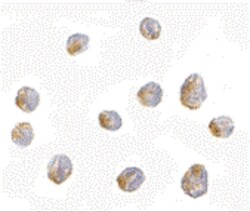
- Experimental details
- Immunocytochemistry of LIS1 in Jurkat cells with LIS1 Polyclonal Antibody (Product # PA5-20419) at 2.5 µg/mL.
- Submitted by
- Invitrogen Antibodies (provider)
- Main image
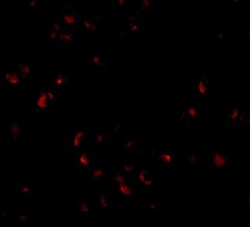
- Experimental details
- Immunofluorescence of LIS1 in Jurkat cells with LIS1 Polyclonal Antibody (Product # PA5-20419) at 20 µg/mL.
- Submitted by
- Invitrogen Antibodies (provider)
- Main image
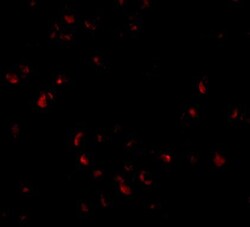
- Experimental details
- Immunofluorescence of LIS1 in Jurkat cells with LIS1 Polyclonal Antibody (Product # PA5-20419) at 20 µg/mL.
- Submitted by
- Invitrogen Antibodies (provider)
- Main image
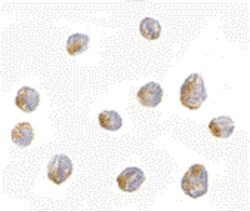
- Experimental details
- Immunocytochemistry of LIS1 in Jurkat cells with LIS1 Polyclonal Antibody (Product # PA5-20419) at 2.5 µg/mL.
Supportive validation
- Submitted by
- Invitrogen Antibodies (provider)
- Main image
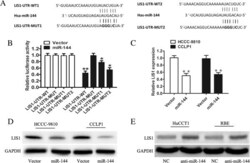
- Experimental details
- Figure 3 LIS1 is a new target regulated by miR-144. A . Schematic of the two predicted seed regions in the 3'-UTR of LIS1 and mutated 3'-UTR. B . Luciferase activity was assayed in HEK293T cells. The wild-type (WT) or mutated LIS1 3'-UTR reporter gene vector was co-transfected with vector or miR-144 (MUT1 and MUT2: mutations of each binding site; MUT: mutation of both binding sites). All values represent the mean of five independent experiments performed in duplicate. C . q-PCR analysis examined the mRNA level of LIS1 after overexpression of miR-144 in HCCC-9810 and CCLP1 cells. D . Endogenous protein levels of LIS1 in HCCC-9810 and CCLP1 cells after indicated treatments were detected by western blots. E . Western blot showed the expression of LIS1 in HuCTT1 and RBE cells transfected with negative control oligonucleotide (NC) or miR-144 inhibitor (anti- miR-144). Data are shown as mean +- SD and were representative of three independent experiments. * P
- Submitted by
- Invitrogen Antibodies (provider)
- Main image
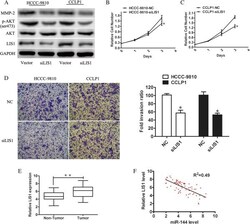
- Experimental details
- Figure 4 Effects of siRNA-mediated knockdown of LIS1 on CCA cell proliferation, invasion, and migration. A . Western blot was used to detect the expression of LIS1, AKT, p-AKT, and MMP2 in HCCC-9810 and CCLP1 cells transfected with indicated siRNAs (20 nmol/L) 48 h after transfection. B and C . The cell proliferation curve of HCCC-9810 and CCLP1 cells transfected with LIS1 siRNA or control for 48 h. D . Representative results of invasion assays. The bar graph showed quantification of cell invasion between cells transfected with LIS1 siRNA and control. E . The mRNA levels of LIS1 were detected in CCA tumor tissues or matched adjacent tissue by q-PCR.GAPDH was used as a internal control. F . Expression of miR-144 was inversely correlated with LIS1 in CCA tissues. Statistical analysis was performed using Pearson's correlation coefficient. (R 2 = 0.49, P
 Explore
Explore Validate
Validate Learn
Learn Western blot
Western blot Immunocytochemistry
Immunocytochemistry